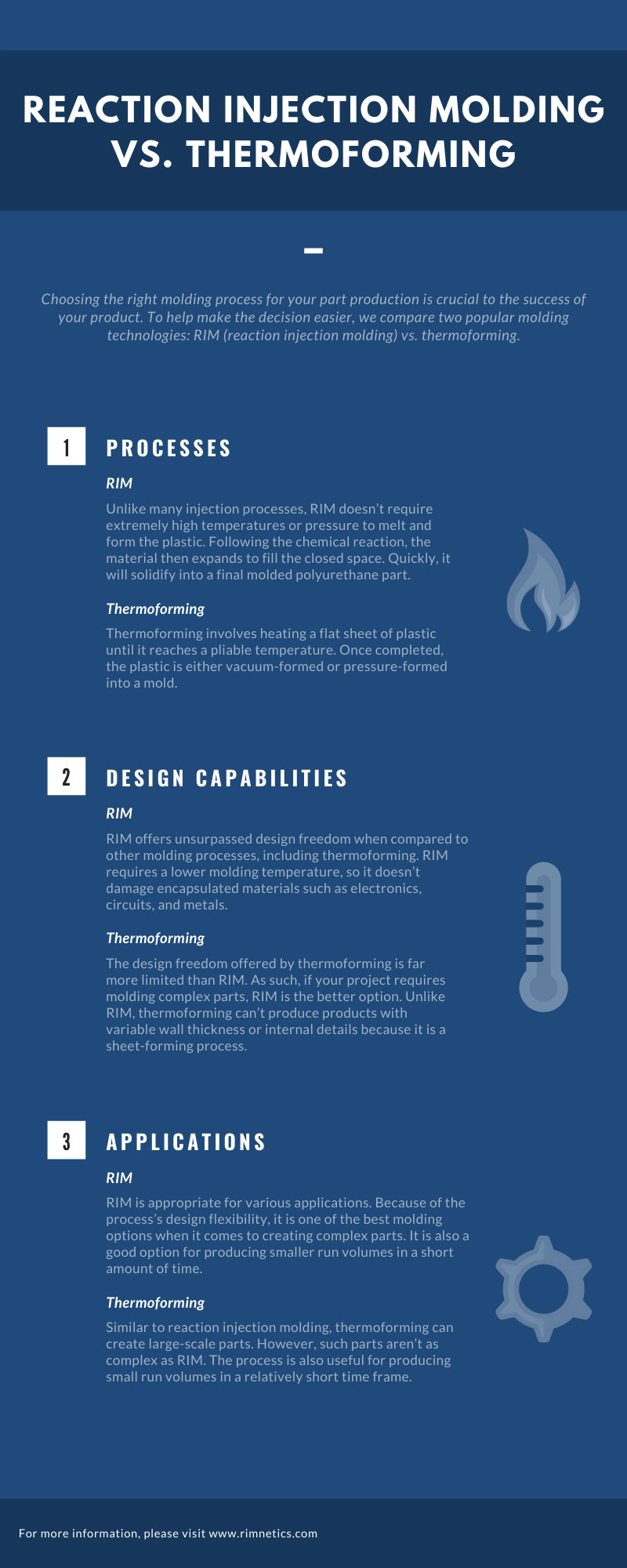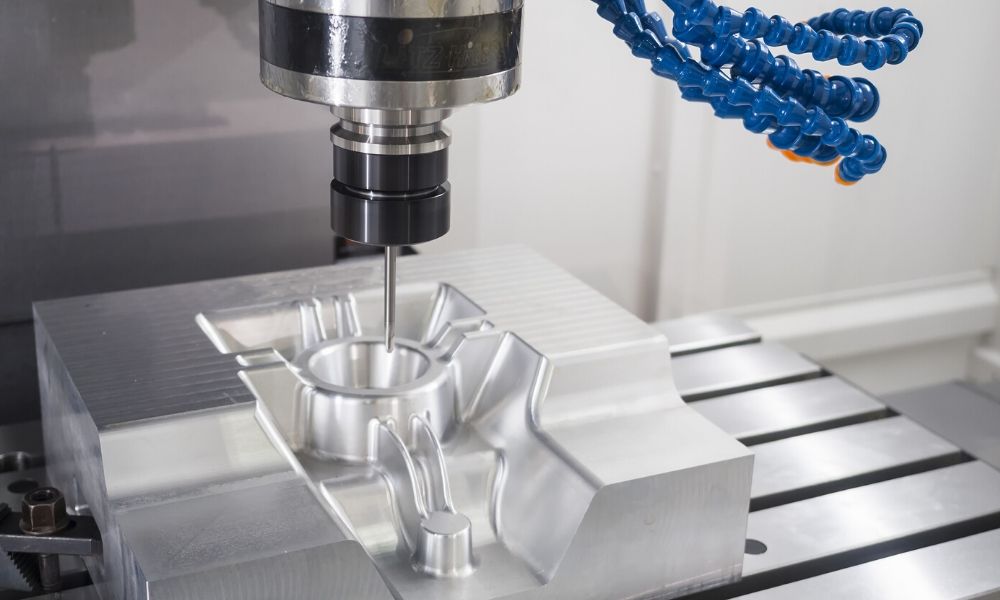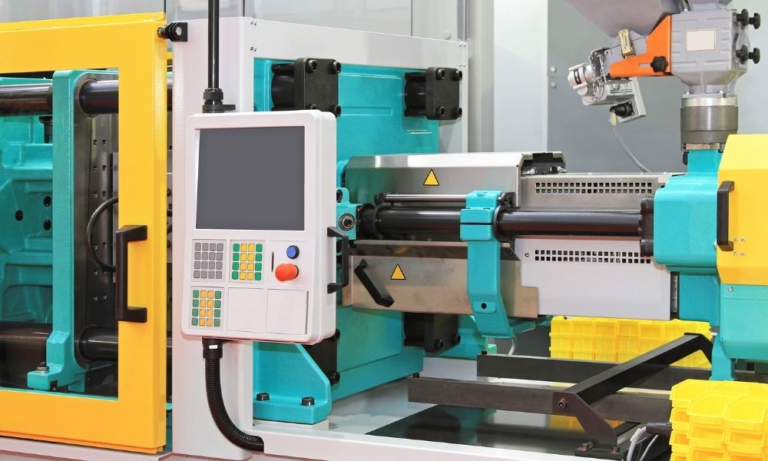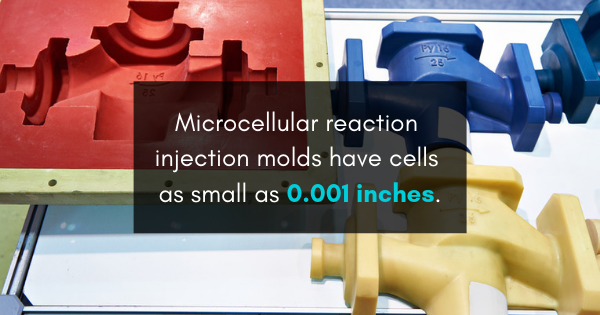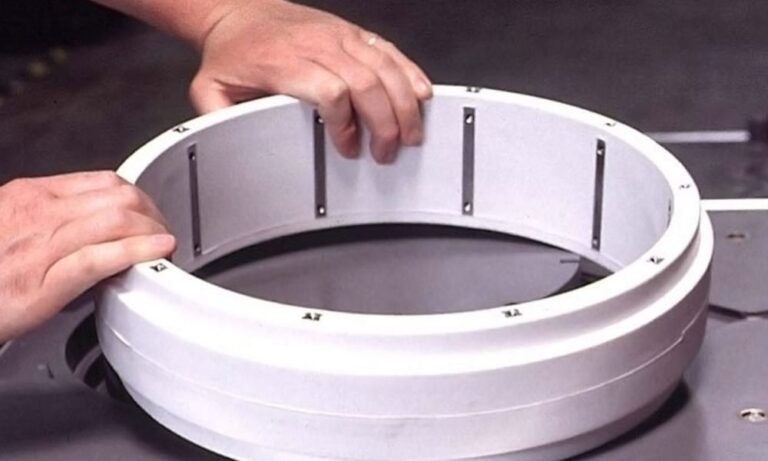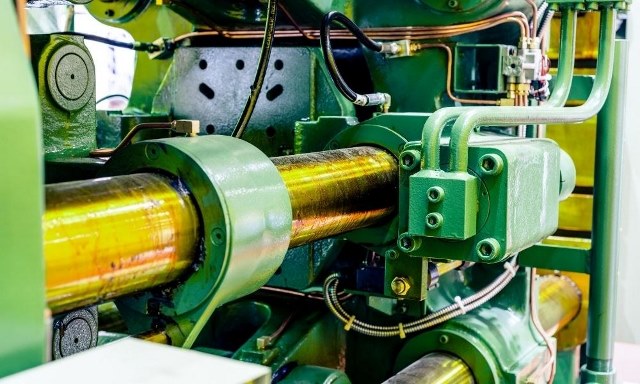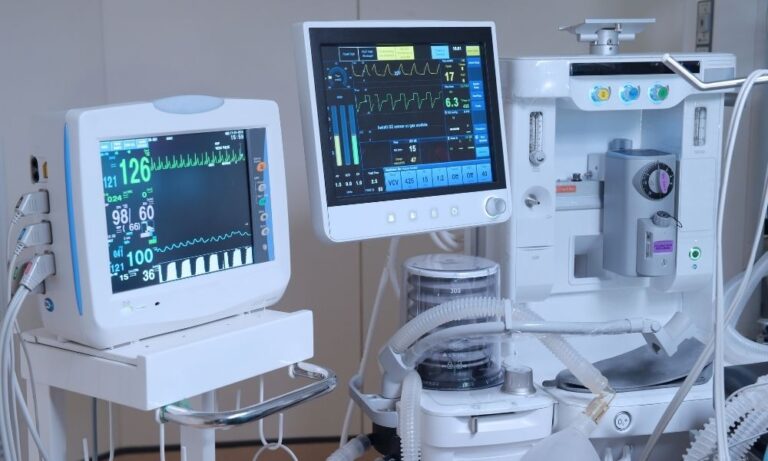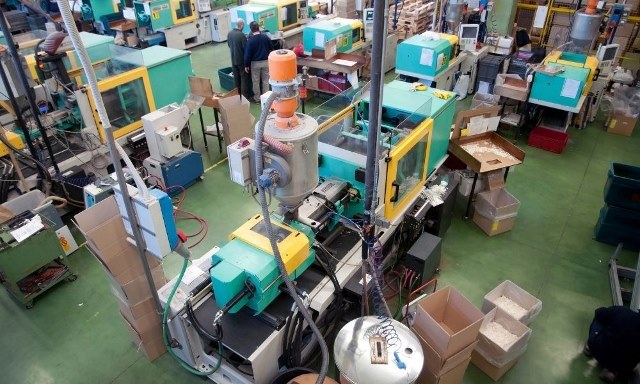Reaction Injection Molding vs. Thermoforming
Choosing the right molding process for your part production is crucial to the success of your product. Since there are so many factors to consider—such as design freedom, costs, tooling lead time, and more—it can be challenging to determine which process is best suited to your needs. To help make the decision easier, we compare two popular molding technologies: RIM (reaction injection molding) vs. thermoforming. While these processes have some similarities, they also have many differences that may distinguish one as the optimal choice for your project. When making your decision, consider how they differ based on the important factors listed below.
PROCESSES
RIM: During the reaction injection molding process, two liquid raw materials combine—polylol and isocyanate. After mixing the reaction injection molding materials together, the mixture is injected into a heated cavity mold where their chemicals react upon touching the mold’s heated surface. This reaction is exothermic, or heat-generating. Unlike many injection processes, RIM doesn’t require extremely high temperatures or pressure to melt and form the plastic. Following the chemical reaction, the material then expands to fill the closed space. Quickly, it will solidify into a final molded polyurethane part. Because the component liquids have such a low viscosity and temperature, manufacturers can typically fill molds in just a few seconds. Further, finished parts can often be de-molded in a minute or two, making RIM an extremely efficient process.
Thermoforming: The thermoforming process involves heating a flat sheet of plastic until it reaches a pliable temperature. Once completed, the plastic is either vacuum-formed or pressure-formed into a mold. The vacuum-forming method suctions air out while the plastic presses against a mold. The pressure forming method vacuums air out of the area between the sheet and mold to press the sheet against the 3D mold. Then professionals apply air pressure above the plastic sheet. Once the process is complete, the material cools off and is removed from the mold. Because there will still be some original matter remaining on the piece of plastic, manufacturers will trim and finish it to form the desired product.
DESIGN CAPABILITIES
RIM: RIM offers unsurpassed design freedom when compared to other molding processes, including thermoforming. RIM requires a lower molding temperature, so it doesn’t damage encapsulated materials such as electronics, circuits, and metals. RIM parts take paint and texture well. Paint and texture can be easily added after they are produced to enhance their aesthetic appearance. RIM is also the only molding process that can produce individual parts with significant variations in wall thickness. Some of RIM’s many desirable design capabilities include:
- Mold in inside features
- Mold in outside features
- Mold stiffening ribs
- Create variable wall thickness
- Encapsulate metal
- Encapsulate PCBs and electronics
- Produce large-scale parts
- Produce small-run volumes
Thermoforming: The design freedom offered by thermoforming is far more limited than RIM. As such, if your project requires molding complex parts, RIM is the better option. Unlike RIM, thermoforming can’t produce products with variable wall thickness or internal details because it is a sheet-forming process. To include such capabilities, this will require manual gluing of additional pieces to the thermoformed part—a complicated and time-consuming process. While the thermoforming process can mold in outside features, manufacturers would have to bond inside features on after the part forms rather than incorporate them into the mold.
- Mold in outside features
- Mold in color and texture
APPLICATIONS
RIM: RIM is appropriate for various applications. Because of the process’s design flexibility, it is one of the best molding options when it comes to creating complex parts. It is also a good option for producing smaller run volumes in a short amount of time. Additional applications include:
- Complex geometry
- Reducing parts and assembly
- Create structural parts
- Part-to-part repeatability
- Creating large parts
- Lower production volumes
- Shorter tooling lead times
Thermoforming: Similar to reaction injection molding, thermoforming can create large-scale parts. However, such parts aren’t as complex as RIM. The process is also useful for producing small run volumes in a relatively short time frame. Additional thermoforming applications include:
- Creating large parts
COST FACTORS
RIM and Thermoforming: While RIM and thermoforming differ in many ways, their main similarity is their cost. RIM and thermoforming processes have a low unit cost. They also produce low-cost mold and offer the ability to make low-cost mold changes. As such, both processes are good options from a price standpoint. However, when choosing RIM, you get a lot more for your money as the process offers a larger variety of design capabilities and applications, yielding a more aesthetically pleasing part.
COMMON USES
RIM: Reaction injection molding’s versatility makes it a great option for producing a wide variety of parts for multiple industries. RIM’s ability to strengthen by adding stiffening ribs or encapsulations also makes it a great option for producing parts that need to withstand significant amounts of weight, such as medical devices. Further, you can also use RIM to produce smaller-scale parts which make it a popular choice among many different industries, from accessories to electronics. Some of the most common uses of RIM include:
- Electronic parts such as gaming machines, vending kiosks, or ATMs
- Robotics
- Marine and defense materials
- Medical devices
- Lab equipment
- Subsea and marine systems and devices
- Structural enclosures
Thermoforming: Thermoformed parts aren’t as strong as RIM parts. The strength of thermoformed parts is completely reliant on their outer shell, whereas you can strengthen RIM parts using a variety of part-stiffening techniques. Examples of some of the uses of thermoforming include:
- Point-of-purchase displays
- Dunnage material trays or pallets
- Fitness equipment
- Office equipment
- Multipart medical devices
- Lab equipment
- Industrial and outdoor equipment enclosures
When deciding between thermoforming and reaction injection molding, it is important to consider the factors listed above to find the process that best suits your project’s needs. If you determine that reaction injection molding will be the most effective process for you, Rimnetics has over 30 years of experience in RIM molding. Our team can help ensure your project is a success. To determine if RIM is an economically and technically feasible option and to optimize your design, send us your files, and we will review them for free. For more information regarding our services, contact us today.
